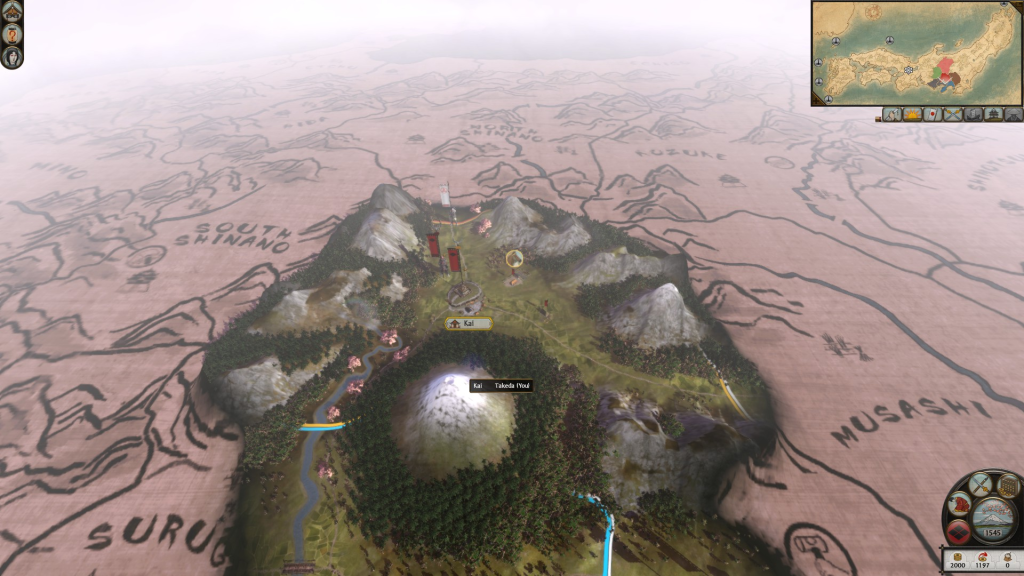Introduction
Hello, and welcome to my Let’s Play of Total War: Shogun 2.
Shogun 2 casts players as a daimyo, one of the regional warlords of sixteenth-century Japan. The ultimate goal is to march on Kyoto, at the centre of the map, and enthrone oneself as shogun. Along the way, the player must manage a realm, raise armies, and command them in battle. The game triumphs on every level — as an exercise in strategic decision-making; as an epic come to life; and as an aesthetic treat. It is my favourite strategy game of all time.
For this run, I have opted to play as the Takeda clan, led by one of the most renowned warlords of the period — Takeda Shingen. This is, in fact, my second Takeda attempt — I abandoned the first after painting myself into a corner. I turn the game’s difficulty up to “Hard”, which affects both the strategic map and the tactical battles. My intent is to turn down the battles to “Normal” — the computer cheats on higher battle difficulties. Instead, I forget. As a result, the game so far has been entirely played on Hard.
I’ve chosen the Takeda for two reasons. First, their location in central Japan will make for a nice change — I won my last Shogun 2 campaign (using the Fall of the Samurai expansion pack) as an outlying island clan. Second, I’ve been meaning to make more extensive use of cavalry in Total War games, a job for which the Takeda are well-suited — all their horsemen receive a bonus.
Here is the opening cinematic for the Takeda:
And here is the situation at the beginning of the game:
 The Takeda start in Kai province, a landlocked mountain pass that runs north/south. All cavalry trained in Kai will receive a bonus, courtesy of the province’s superior horse pastures; this stacks with the innate Takeda bonus to cavalry.
The Takeda start in Kai province, a landlocked mountain pass that runs north/south. All cavalry trained in Kai will receive a bonus, courtesy of the province’s superior horse pastures; this stacks with the innate Takeda bonus to cavalry.
To the north of Kai is North Shinano, also landlocked. It is home to the Murakami clan, who begin at war with me — you can see a small Murakami army near the border. To the south are Musashi province, home to modern-day Tokyo, and Suruga province, home to the allied Imagawa clan.
To win the game, I have to hold 25 provinces, including Kai, Kyoto, North Shinano, and three other provinces all to the north of Shinano. Before then, I must face one of Shogun 2’s most distinctive challenges — realm divide. When I draw close to victory, most of the remaining computer players will declare war on me; I’ll need to build my empire around surviving that final difficulty spike.